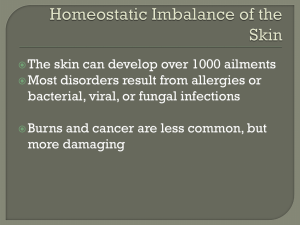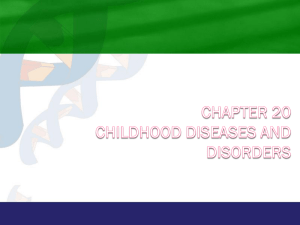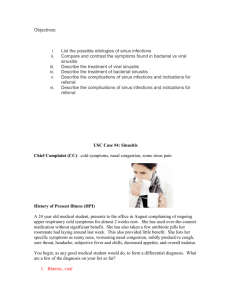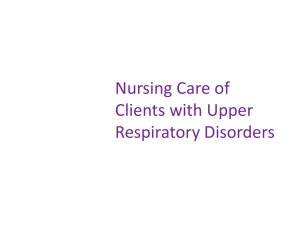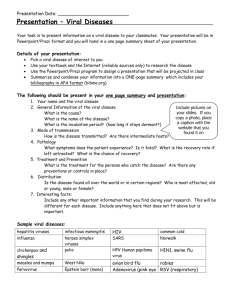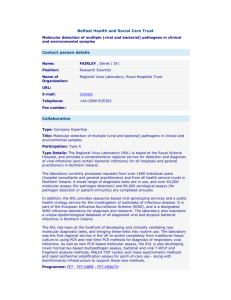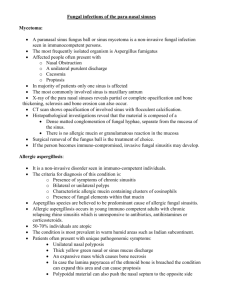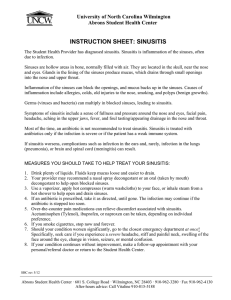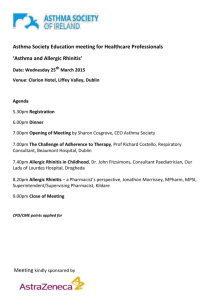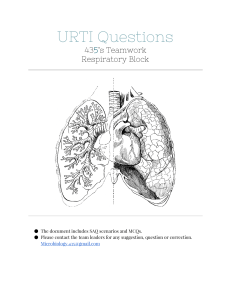Upper respiratory - Austin Community College
advertisement
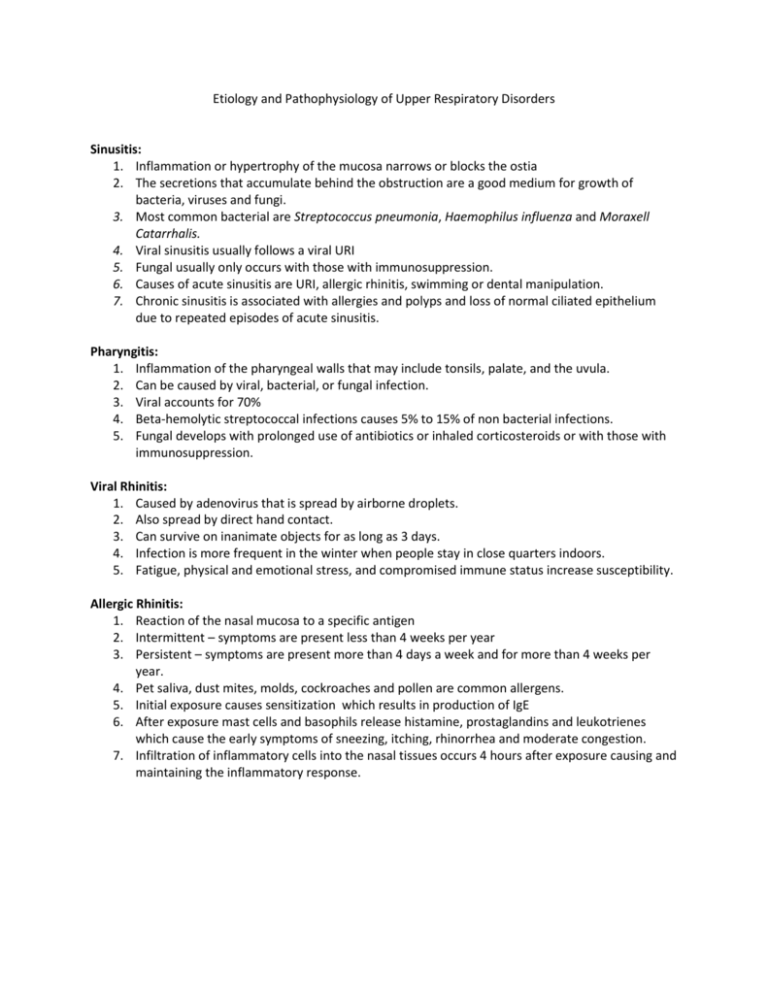
Etiology and Pathophysiology of Upper Respiratory Disorders Sinusitis: 1. Inflammation or hypertrophy of the mucosa narrows or blocks the ostia 2. The secretions that accumulate behind the obstruction are a good medium for growth of bacteria, viruses and fungi. 3. Most common bacterial are Streptococcus pneumonia, Haemophilus influenza and Moraxell Catarrhalis. 4. Viral sinusitis usually follows a viral URI 5. Fungal usually only occurs with those with immunosuppression. 6. Causes of acute sinusitis are URI, allergic rhinitis, swimming or dental manipulation. 7. Chronic sinusitis is associated with allergies and polyps and loss of normal ciliated epithelium due to repeated episodes of acute sinusitis. Pharyngitis: 1. Inflammation of the pharyngeal walls that may include tonsils, palate, and the uvula. 2. Can be caused by viral, bacterial, or fungal infection. 3. Viral accounts for 70% 4. Beta-hemolytic streptococcal infections causes 5% to 15% of non bacterial infections. 5. Fungal develops with prolonged use of antibiotics or inhaled corticosteroids or with those with immunosuppression. Viral Rhinitis: 1. Caused by adenovirus that is spread by airborne droplets. 2. Also spread by direct hand contact. 3. Can survive on inanimate objects for as long as 3 days. 4. Infection is more frequent in the winter when people stay in close quarters indoors. 5. Fatigue, physical and emotional stress, and compromised immune status increase susceptibility. Allergic Rhinitis: 1. Reaction of the nasal mucosa to a specific antigen 2. Intermittent – symptoms are present less than 4 weeks per year 3. Persistent – symptoms are present more than 4 days a week and for more than 4 weeks per year. 4. Pet saliva, dust mites, molds, cockroaches and pollen are common allergens. 5. Initial exposure causes sensitization which results in production of IgE 6. After exposure mast cells and basophils release histamine, prostaglandins and leukotrienes which cause the early symptoms of sneezing, itching, rhinorrhea and moderate congestion. 7. Infiltration of inflammatory cells into the nasal tissues occurs 4 hours after exposure causing and maintaining the inflammatory response. Influenza: 1. Classified into types A, B and C. Only A and B affect humans 2. Type A is the most common 3. Virus can be found in birds, pigs or chickens and then move on to infect humans 4. They mutate rapidly accounting for widespread disease. 5. Communicated through droplet contact and inhalation of aerosolized particles. 6. Incubation period of 1-4 days with peak transmission risk starting at about 1 days prior to onset of symptoms and lasting from 4 to 7 days afterward. Head and Neck Cancer: 1. Usually squamous cell and arise from mucosal surfaces. 2. Occur in paranasal sinuses, oral cavity and the nasopharynx, oropharynx and the larynx. 3. Pathology involves tumor growth, tumor extension and metastases.
